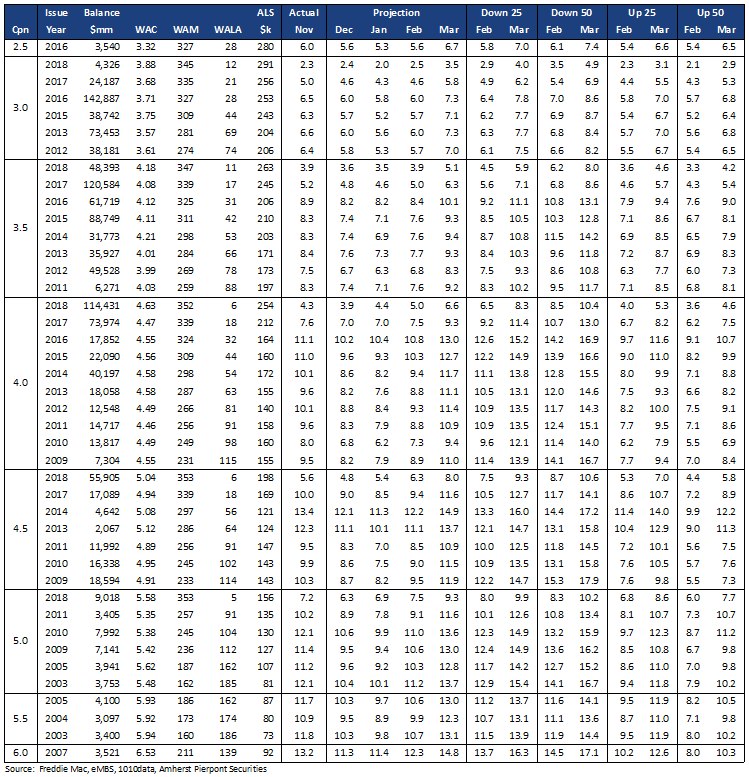Uncategorized
Slowing prepayment speeds into January
admin | December 7, 2018
This document is intended for institutional investors and is not subject to all of the independence and disclosure standards applicable to debt research reports prepared for retail investors. This material does not constitute research.
Prepayment speeds in 30-year MBS slowed in November but still came in above expectations, falling 14.7% at Fannie Mae and 13.0% at Freddie Mac. Speeds should slow another 10% in December and possibly another 5% to 10% in January. Although rates have rallied over the last month, the move was not large enough to lift speeds. Ginnie Mae pools and conventional pools backed by lower loan balances still look like good protection against extension risk.
Still running at a faster pace
Some pools continue to prepay faster than the broad market:
- Ginnie Mae pools trading below par continue to prepay significantly faster than their conventional counterparts. For example, 2016 vintage Ginnie Mae 2.5%s prepaid 7.5 CPR in November compared to 4.5 CPR for Fannie Mae, and 2016 Ginnie Mae 3.0%s prepaid 9.7 CPR compared to 6.3 CPR for Fannie Mae.
- Pools below par backed by smaller loans continue to prepay faster than generic pools. For example, 2016 vintage 3.0% low loan-balance pools prepaid 8.5 CPR in November, only 0.3 CPR slower than October. Generic pools slowed 0.7 CPR to 6.2 CPR.
The Fannie Mae and Freddie Mac numbers
Fannie Mae 30-year aggregate speeds slowed 14.7% to 7.6 CPR from 8.8 CPR, a slightly higher print than expected. Slower speeds were driven by a 2-day drop in business days, which accounted for a roughly 10% decline. Seasonally lower housing turnover and roughly 10 bp higher lagged mortgage rates also contributed to slower speeds. Speeds fell pretty consistently across the coupons, which is typical when speeds are primarily driven by day-count.
Freddie Mac 30-year speeds fell 13.0% to 7.4 CPR from 8.5 CPR, a bit stronger than Fannie Mae’s print. This slightly narrowed the aggregate speed gap between the two GSEs. The 2.5%s 2016 were a bit interesting—that Gold cohort jumped 24.2% to 6.0 CPR from 4.9 CPR while the same Fannie cohort slowed 28.9% to 4.4 CPR from 6.1 CPR. Granted this is a small cohort, roughly $4 billion at each GSE, but the Freddie print is quite strong for such a deep discount in a winter month.
New pool issuance holds steady
New pool issuance was virtually unchanged at roughly $97.0 billion in November. Purchase loan volume only dropped slightly, to $68.0 billion from $69.3 billion. Strong purchase loan production is an indicator that there is a good amount of housing turnover. Looking ahead, the slower winter months should bring a commensurate drop in purchase production but that wouldn’t necessarily indicate a permanent drop.
Meanwhile, refinance volumes increased slightly. Cash out refinances, which are reported by Freddie Mac, bounced back in November. The $5.5 billion printed was the highest number since May and the third highest month of 2018. Strong cash-out refinance production is another indicator that discount prepayment speeds should remain relatively strong.
Exhibit 1: Fewer business days and lower seasonal turnover slow speeds
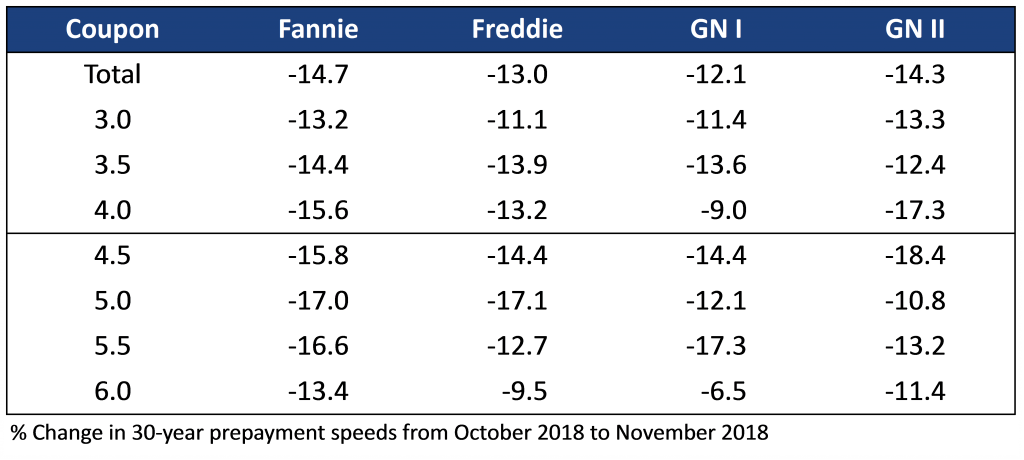
Source: Fannie Mae, Freddie Mac, Ginnie Mae, eMBS, 1010data, Amherst Pierpont Securities
Ginnie Mae speeds slowed along with conventionals
Ginnie Mae MBS also slowed in December—aggregate Ginnie Mae I speeds fell 12% and Ginnie Mae II speeds dropped 14%. Since prepayments were primarily determined by lower day-count and lower seasonal turnover, changes in Ginnie Mae speeds should track conventionals in November. On an absolute basis, however, Ginnie Mae pools generally remain faster than conventional pools. This is a particular benefit in discount Ginnie Mae 2.5% and 3.0% pools.
Looking ahead
Prepayment speeds should continue to slow over the next couple of months. The recent drop in interest rates is too modest and rates are too high to push speeds faster. Slower housing turnover and an extremely short month in December—only 19 business days due to the holidays—should push speeds another 10% slower. Day-count rebounds in January but speeds are typically extremely slow that month and could drop an additional 5–10%. This would push aggregate speeds to bottom at roughly 6 CPR before increasing into the spring and summer months.
Data Tables
Exhibit 2: Prepayment summary
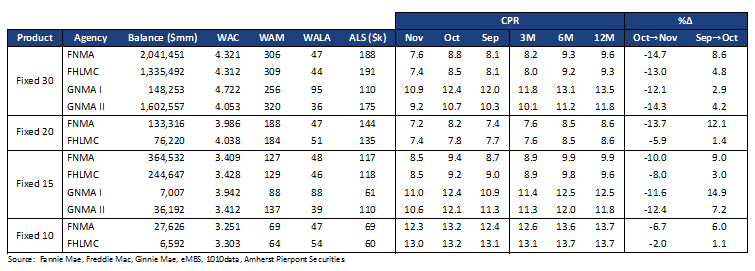
Our short term forecast is shown in Exhibit 5 (Fannie Mae) and Exhibit 6 (Freddie Mac). Exhibit 4 shows the static rates used in the prepayment forecast.
Exhibit 3: Agency speeds, largest cohorts
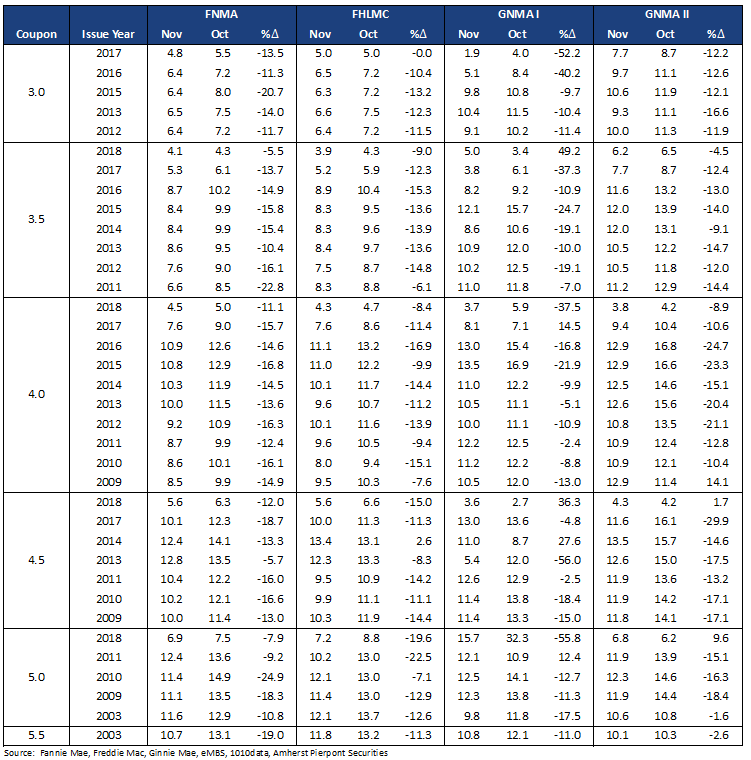
Exhibit 4: Mortgage rate forecast

Exhibit 5: Fannie Mae short term forecast
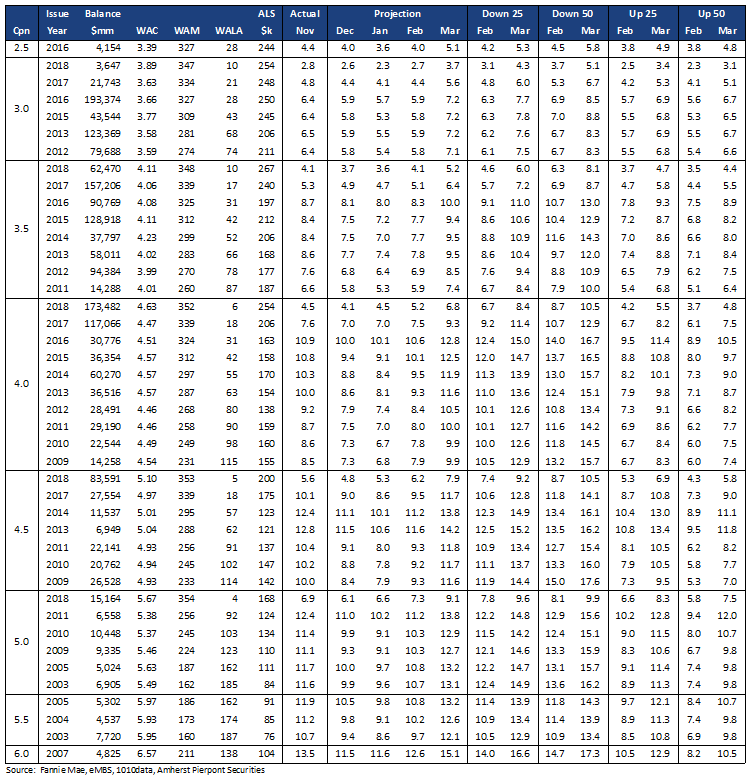
Exhibit 6: Freddie Mac short term forecast
